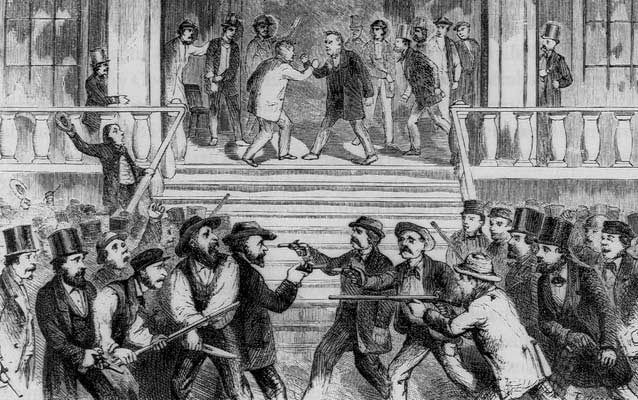Bleeding Kansas was a series of confrontational events that occurred between 1854 - 1861. The confrontations occurred due to different ideologies on the issue of slavery. The admittance of Kansas as a slave state or free state was at the heart of the controversy.

Bleeding Kansas Facts
In 1854, the Kansas-Nebraska Act was passed. This caused many settlers to travel to the newly created Kansas Territory.
Folks came to the Kansas territory for a variety of reasons. Many wanted the opportunity to settle in the new land and build a new life. While others came for political reasons.
The Kansas-Nebraska Act allowed the people living in Kansas to decide for themselves whether or not they wanted to allow slavery. This was very controversial since it overturned the Missouri Compromise, which made Kansas a free state.
Southerners wanted to reduce the Northern advantage in Congress and preserve slavery, while many Northerners wanted to prevent the spread of slavery at all costs
Thousands of pro-slavery men from Missouri moved into the territory. Although these men did not live in Kansas, they were permitted to vote, and in 1855, they were able to elect a territorial legislature favorable to slavery.
Governor Andrew Reeder supported slavery in Kansas until he saw how the pro-slavery Missourians hijacked the process. He tried to have the election overturned, which raised tensions.
In response, President Franklin Pierce replaced the governor and upheld the elections. He believed that would help calm the tensions, but it did not.
The residents who opposed slavery's expansion formed their own legislature and argued that they were the majority and that the government should respect their wishes.
In response, an anti-slavery legislature met in Topeka.
Pro-slavery resident attacked an anti-slavery community in Lawrence, Kansas. The pro-slavery men burned the governor's home, local hotel, and the town's newspaper to the ground.
In response, John Brown and his four sons attacked Pottawatomie Creek, Kansas. Here, Brown and his followers attacked five pro-slavery men and hacked them to death in front of their families.
Many religious leaders on both sides of the argument began to condone the violence and even encourage it.
Bleeding Kansas continued throughout the Civil War and did not end until Lee's surrender at Appomattox.
